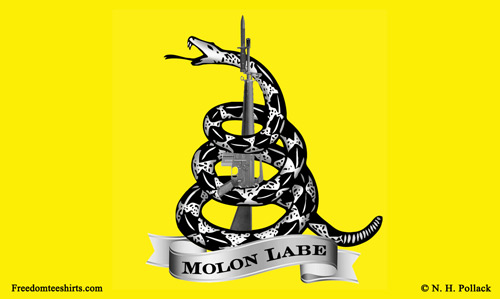|
In December 1775, Benjamin Franklin published an essay in the Pennsylvania Journal under the pseudonym American Guesser in which he suggested that the rattlesnake was a good symbol for the American spirit:
"I recollected that her eye excelled in brightness, that of any other animal, and that she has no eye-lids—She may therefore be esteemed an emblem of vigilance.—She never begins an attack, nor, when once engaged, ever surrenders: She is therefore an emblem of magnanimity and true courage.—As if anxious to prevent all pretensions of quarreling with her, the weapons with which nature has furnished her, she conceals in the roof of her mouth, so that, to those who are unacquainted with her, she appears to be a most defenseless animal; and even when those weapons are shown and extended for her defense, they appear weak and contemptible; but their wounds however small, are decisive and fatal:—Conscious of this, she never wounds till she has generously given notice, even to her enemy, and cautioned him against the danger of stepping on her.—Was I wrong, Sir, in thinking this a strong picture of the temper and conduct of America?"
In the tumultuous summer of 1775, the Second Continental Congress authorized the mustering of five companies of Marines to accompany the Navy on their first mission. The first Marines enlisted in the city of Philadelphia, and they carried drums painted yellow, depicting a coiled rattlesnake with thirteen rattles, and the motto "Don't Tread on Me." This is the first recorded mention of the future Gadsden flag's
symbolism. At the Congress, Continental Colonel Christopher Gadsden
represented his home state of South Carolina. He was one of seven
members of the Marine Committee who were outfitting the first naval mission.
Before the departure of that first mission in December 1775, the newly appointed commander-in-chief of the Navy, Commodore Esek Hopkins, received the yellow rattlesnake flag from Gadsden to serve as the distinctive personal standard of his flagship. It was displayed at the mainmast.
Gadsden also presented a copy of this flag to the Congress of South Carolina in Charleston, South Carolina. This was recorded in the South Carolina congressional journals on February 9, 1776:
"Col. Gadsden presented to the Congress an elegant standard, such as is to be used by the commander in chief of the American Navy; being a yellow field, with a lively representation of a rattlesnake in the middle in the attitude of going to strike and these words underneath, 'Don't tread on me.'"
|
|
Loosely translated it means, "Come and take
them". The phrase was reportedly the defiant response of King Leonidas of Sparta to
King Xerxes of Persia when King Xerxes demanded that the greatly
outnumbered Greeks lay down their arms and surrender at the onset of the Battle of Thermopylae (480 BC). Instead, the Spartans held Thermopylae for three days. Although the Spartan contingent was ultimately destroyed, they inflicted serious damage on the Persian army. Most importantly, this delayed the Persians' progress to Athens, providing sufficient time for the city's evacuation to the island of Salamis. Though a clear defeat, Thermopylae served as a moral victory and inspired the Greek forces to crush the Persians at the Battle of Salamis and the Battle of
Plataea.
Currently, the phrase is the defiant challenge of all
U.S. citizens who believe in, and defend, their rights guaranteed by the
2nd Amendment of the Constitution in the face of anti-rights activists
and an anti-rights politicians bent on infringing those rights and
disarming the citizens.
|

